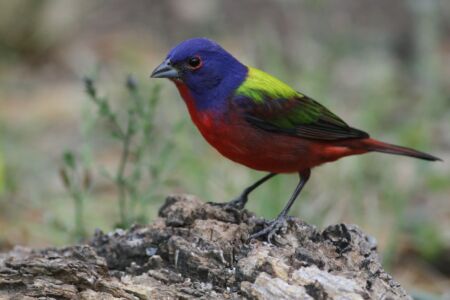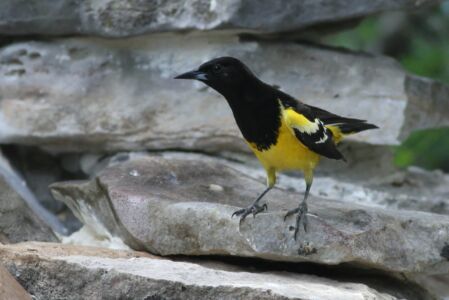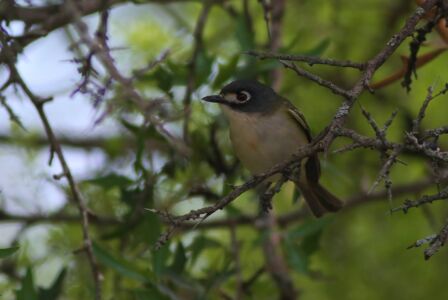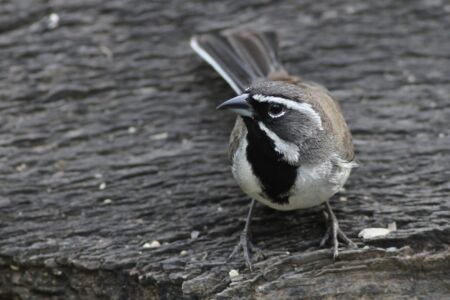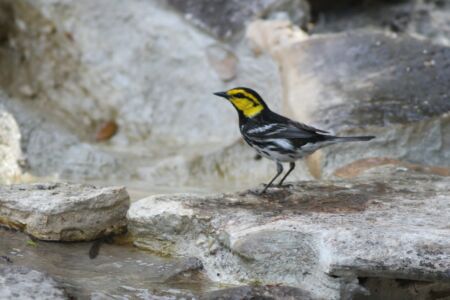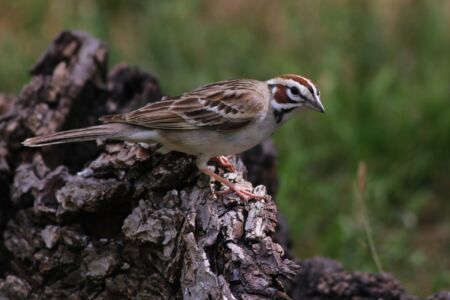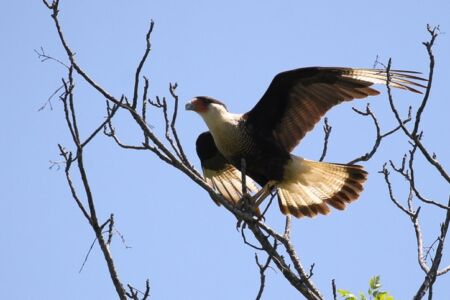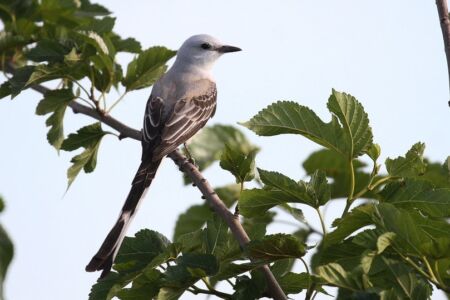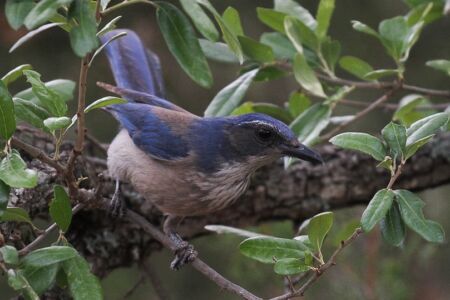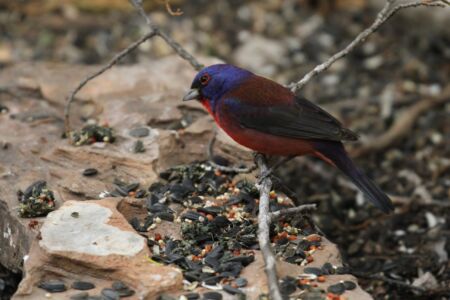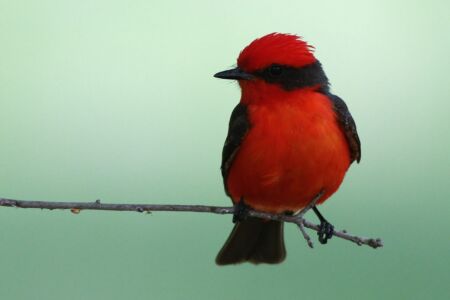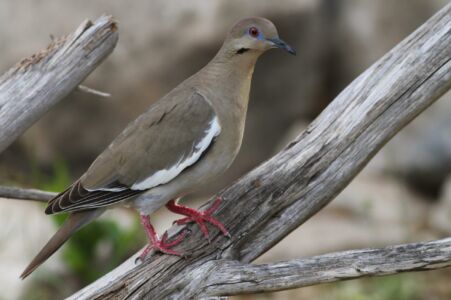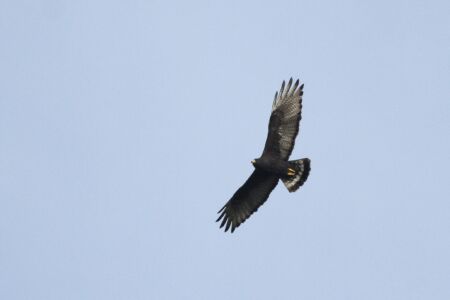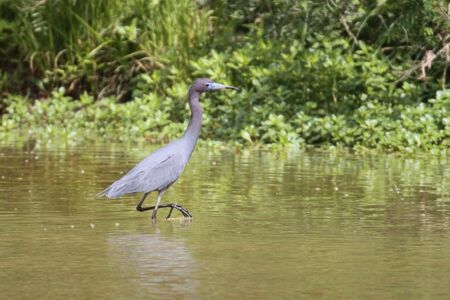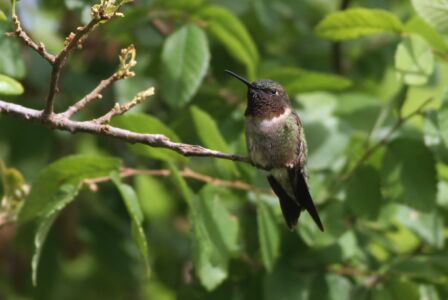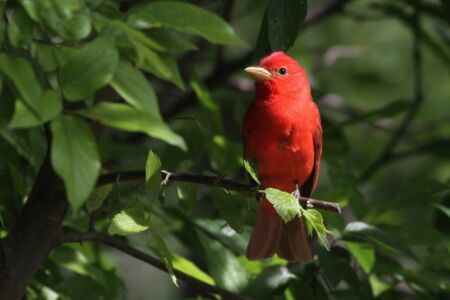TRIP REPORT: TEXAS – 2018 April – Golden-cheeked Warbler & Black-capped Vireo Target Trip
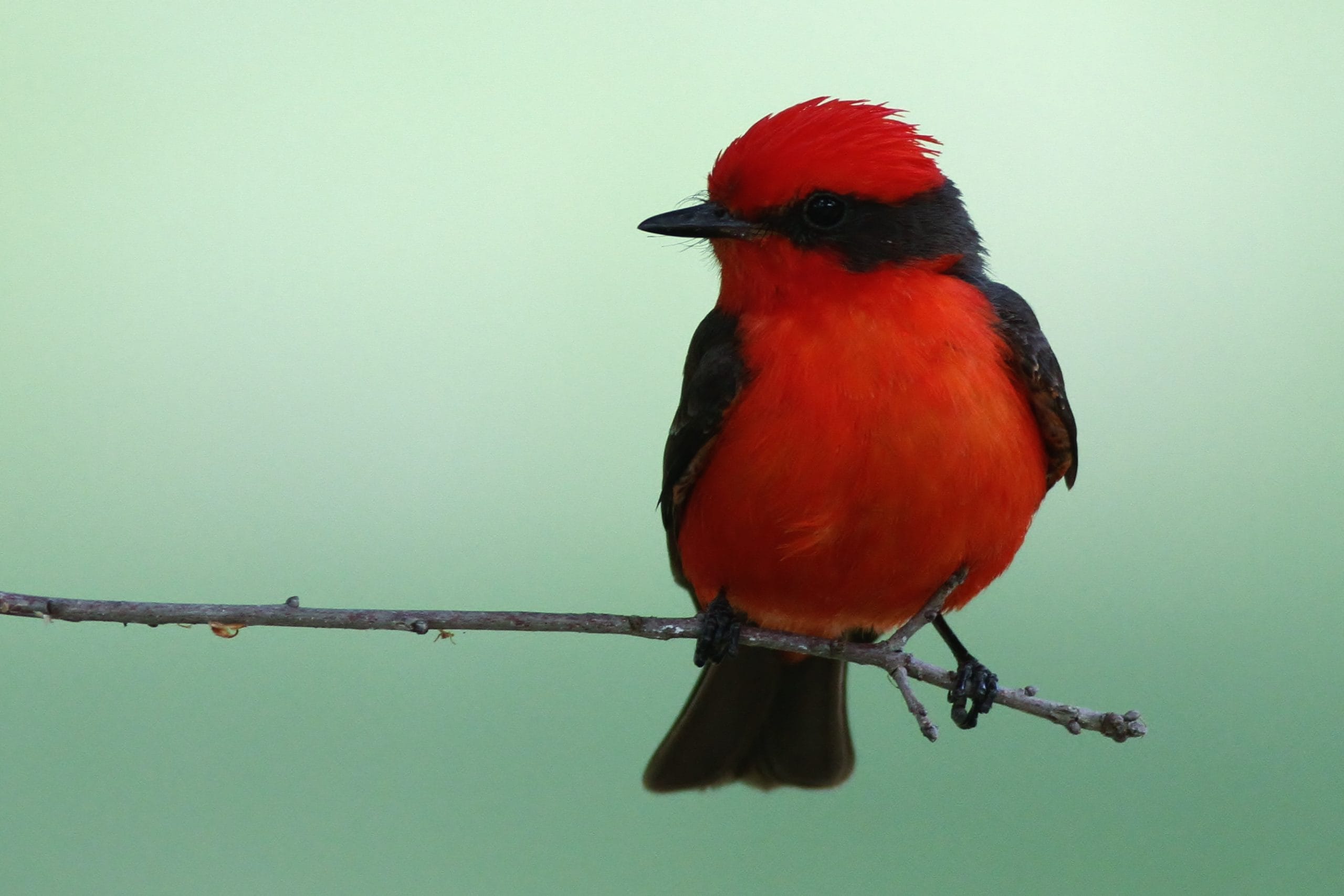
TOUR FOCUS
TRIP LEADERS
PRIVATE TOUR OPTION
This tour is available as a private trip for any size group. The tour cost will vary with the number of people and any custom requests.
TESTIMONIALS
Trip Report written by Alex Lamoreaux
Day 1 / April 27, 2018
Following a jam-packed week of birding along the Rio Grande for our “Rio Grande Valley in Spring” tour, I traveled north to meet up with four birders and lead them on our first-ever target tour for Golden-cheeked Warbler and Black-capped Vireo! This combination of back-to-back Texas tours provides, arguably, the most birdy 1.5 weeks possible in the United States. Over 250 species of birds are possible by combining our “Rio Grande Valley in Spring” weeklong trip with this wonderful long-weekend Golden-cheeked Warbler and Black-capped Vireo target trip. The shear number of migrant birds moving through the region is incredible, and of course everything is bigger in Texas, so it’s no surprise that the region also boasts numerous specialties.
My first two birders were picked up from the Austin airport at 10:00am, and we promptly set off for some birding before two other guests would be coming in later in the afternoon. Right outside the airport, on Metropolis Drive, we saw an adult Red-shouldered Hawk and adult Red-tailed Hawk soaring. Barn Swallows and Mourning Doves were plentiful.

Little Blue Heron – Alex Lamoreaux
By 10:12am we were at the front gate to McKinney Falls State Park. The exposed, jagged, karst limestone along the Onion Creek creates a few impressive waterfalls and birding along the lush riparian corridor was a great way to kick off this tour. The resident and migrant birds have a decidedly eastern bias here, and we ticked off Red-bellied Woodpecker, Northern Cardinals, Eastern Phoebe, Gray Catbirds, Carolina Wren, White-eyed Vireos, and Great Crested Flycatcher around the parking lot. Walking out to the falls gave us views of an adult Little Blue Heron and Snowy Egret hunting in the shallow water. White-winged Doves, Blue Jays, and Cedar Waxwings could be seen flying in the distance.
Overhead we had Barn and Northern Rough-winged Swallows, but primarily Cliff Swallow who were busy carrying mouthfulls of mud back to their nesting sites. A careful scan of the Cliff Swallows provided our first ‘Texas’ Cave Swallows of the trip; a specialty in this region.
A muddy shoreline at a bend in the creek provided a nice patch of shorebird habitat and we scoped out Killdeer, Spotted Sandpipers, Solitary Sandpipers, Greater and Lesser Yellowlegs, 4 Baird’s Sandpipers, and 1 Pectoral Sandpiper among a dozen Least. Common Yellowthroat, one Painted Bunting, and a ‘Myrtle’ Yellow-rumped Warbler were spotted in the creekside shrubs. Numerous butterflies were noted on the walk back to the car, and we heard a Summer Tanager singing.

Scissor-tailed Flycatcher – Alex Lamoreaux
Back to the airport at 11:45am, and we had Marianne and Melody safely in the van! Around the airport grounds we spotted classic urban birds like Eurasian Collared-Dove, House Sparrows, House Finches, and European Starling. Large, black, raucous Great-tailed Grackles were (and would continue to be) abundant. I spotted a very distant group of 6 migrating Swainson’s Hawks and a Crested Caracara flew past! All the while, 2 Scissor-tailed Flycatchers and 5 Western Kingbirds sallying for bugs from their prominent perches along the chainlink fencing. Needless to say, all five of us were pumped up and ready for a fun weekend birding the Hill Country of Texas.
The Austin-area hotspot Hornsby Bend was our primary birding destination for the afternoon, and we arrived at 1:30pm. This large property is a wastewater facility and composting center that offers birders fairly open access to wander the large impoundments. It was a clear, calm day but the midday heat and humidity were obvious as we got out of the van at the visitor center. There are dozens of plastic Purple Martin nestboxes rigged up here, and we watched 80 martins attempting to stake out prime real estate. We drove up onto the berm of the largest and deepest impoundment and numerous waterfowl were out on the water. Among 110 Blue-winged Teal, we spotted Northern Shovelers, Ruddy Ducks, Lesser Scaup, American Coots, and one breeding-plumage Eared Grebe. Stippled across the flat water of the pond were nearly 200 Wilson’s Phalarope, busily spinning up micro-invertebrates.
Overhead were numerous swallows hunting down aerial insects, including our first Tree Swallow. Two groups of migrating Common Nighthawks passed over, and a long line of 375 Franklin’s Gulls streamed northward. 8 Mississippi Kites, 12 Swainson’s Hawks, and Black and Turkey Vultures passed overhead too. All of these species had just spent the winter in South America and were now racing back north to complete their massive spring migration.
The wastewater impoundments offers great habitat for refueling shorebirds, and the number of birds was staggering. Picking through the foraging swarms of over 300 Least Sandpipers gave us great close-up views of 4 Western, 1 Semipalmated, 40 Pectoral, and 4 Baird’s Sandpipers. Three Greater Yellowlegs, 12 Lesser Yellowlegs, 5 American Golden-Plovers towered over the peeps while three pairs of Black-necked Stilts were scattered around the grassy edges trying to defend their territories from all the migrant shorebirds present. Meanwhile, some resident Killdeer already had some fluffy fledged chicks! At least 10 Spotted Sandpipers lined the edges of the impoundments.

Ruby-throated Hummingbird – Alex Lamoreaux
Dropping down into a wooded swamp area, we spotted a pair of Wood Ducks and Pileated Woodpecker. Two adult Red-shouldered Hawks and an Osprey were perched around the pond, and a Green Heron was tucked into some dense brush. We stopped at a bird blind and small pollinator garden where we had a brief views of a Ruby-throated or Black-chinned Hummingbird, but couldn’t be sure which as it zoomed off much too quickly…
We took a short walk into some nice deciduous woodland on the backside of the impoundments, and were treated to Downy Woodpecker, Carolina Wren, Carolina Chickadee, Northern Cardinals, and both Indigo and Painted Buntings! Without even noticing, we blew through 3.5 hours of birding and had racked up a great list to kick off this tour. As icing on the cake, we spotted a recently-fledged Eastern Bluebird and had a flyover Crested Caracara on the drive out of the property.
In downtown Austin, we visited Triangle Pond. Surrounded on all sides by brand-new apartment complexes, this tiny retention pond is home to one of the northernmost pairs of Least Grebes and we quickly spotted them diving in the murky water. Seven adult Wood Ducks were in the company of at least 8 ducklings, and pairs of Killdeer, Green Herons, and a Great Blue Heron were stalking the edges. In some dense vegetation a Lincoln’s Sparrow skulked, but surprised us all by coming completely out into the open to bathe and splash around in a puddle!

White-winged Dove – Alex Lamoreaux
Overhead we noted 4 Chimney Swifts and 12 White-winged Doves among the abundant Rock Pigeons and Eurasian Collared-Doves. A single Monk Parakeet made a frustratingly brief flyover, but once back on I-35 we saw another much better. These parakeets are familiar pets, but feral colonies are established in urban areas throughout the country, and quite a few of them can be found in Austin. I pointed out some of their bulky stick nests on electric poles as we drove towards the Congress Avenue Bridge.
To finish the day, we visited the Congress Avenue Bridge to wait for the Mexican Free-tailed Bats to leave their roost. A group of 5 Cattle Egrets flew past. No bats were even in sight yet, and already the scene was incredible – hundreds of people lined the top of the bridge, and we joined hundreds more at the base of the bridge. It was like a huge tailgating event for a bat roost!
Right on cue, at 8:20pm, thousands of bats started piling out from under the bridge. It looked as it the bottom of the bridge was slowly disintegrating into a cloud of bats! Researchers on site estimated at least 750,000 bats for the evening and this roost grows to an astonishing 1.5 million during the summer!
We had a nice dinner in downtown Austin, and finally had a moment to settle down from the birding (and ‘batting’) excitement and introduce ourselves. The Best Western in Cedar Park was our lodging for the night.
Day 2 / April 28, 2018
We gathered at 6:15am on Saturday morning and visited a nearby grocery store to grab snacks for the weekend. I couldn’t help pointing out a Common Nighthawk and Neotropic Cormorant flying over. Everyone was itching to get birding, and after all we did have some major targets to attend to.
We headed west into the Hill Country, and immediately the namesake habitat was apparent. As far as you could see, lush layered hills of juniper and oak covered the landscape. When Spanish explorers first saw this region they named it ‘Balcones’, literally balconies. Today a vast chunk of the unique habitat is thankfully protected as Balcones Canyonlands National Wildlife Refuge. Within these 41,000 acres contains some of the last remaining habitat for Golden-cheeked Warblers and Black-capped Vireos.
By 7:30am we pulled into the parking area for the Cactus Rocks Trail and set out to hike a loop along the steep, juniper hillside. The endemic, old-growth Ashe Juniper (known simply as ‘cedar’ to Texans) provides the only nesting habitat for the endangered Golden-cheeked Warblers. The shaggy, shredded bark is also a main component of the warbler’s nests.

Golden-cheeked Warbler – Alex Lamoreaux
It wasn’t long before we heard male warblers singing, and after some poking around we managed excellent views of multiple males foraging and singing in the treetops. The warblers arrive on their territories by mid-March, and the males here were aggressively defending their domains. We watched as one Golden-cheek chased and attacked a Black-crested Titmouse!
The forest was active with many other birds as well, including Acadian Flycatcher, 6 Woodhouse’s Scrub-Jay, Spotted Towhees, Black-and-white Warblers, and Blue-gray Gnatcatchers. A female Northern Cardinal quietly sat on her nest in a brush-pile. Further down the trail, I picked out a rare-for-the-region Bushtit among titmice, and also unusual were two Hutton’s Vireos! As we watched, a Golden-cheeked Warbler came out of nowhere and body-slammed one of the vireos, chasing it off down the hill. It was almost as if the Golden-cheek knew it was our ‘Golden Bird’, and demanded our attention first and foremost! In drier, flatter habitat on top of the ridge, we saw Rufous-crowned and Field Sparrows, and an American Goldfinch flew overhead.

Lark Sparrow – Alex Lamoreaux
With the first of our two target birds under our belt, we headed off to the Balcones Canyonlands NWR visitor center for a bathroom break and to bird the riparian corridor there. In tall cottonwoods along the creek highlights were 3 Black-chinned Hummingbirds (one on a nest), 1 Eastern Wood-Pewee, 1 Willow Flycatcher, 1 Baltimore Oriole, 1 Red-eyed Vireo, 3 Nashville Warblers, and 2 Summer Tanagers. In the pollinator fields we spotted a Lark Sparrow, 1 male Lesser Goldfinch, and 4 Savannah Sparrows. In the ornamental plantings around the visitor center, we spotted 3 Painted Buntings and multiple House Sparrows. Cliff Swallows were building nests under the overhanging roof, and a Common Raven soared over.
Our next stop was to the Doeskin Ranch portion of the NWR. This former homestead was donated to the refuge, and due to the previous owner’s more environmentally-friendly cattle grazing practices the area was able to quickly revert back to some prime Hill Country habitat. Two adult Red-tailed Hawks soared overhead, and their particularly pale and plain plumage characterized them as the locally-breeding subspecies known as Fuerte’s Red-tailed Hawk, described by the American naturalist on one of his expeditions to Mexico. It was quite hot and humid at the Doeskin Ranch, but we took a leisurely loop around some trails and ate snacks under the shade of a large oak. Highlights here included Least Flycatcher, Orange-crowned Warbler (singing!), Bewick’s Wren, a male Summer Tanager, and 2 Painted Buntings.
Our final stop within the refuge, and before heading west to Junction, was to the Shin Oaks Observation Deck. This neat spot has a wooden boardwalk out to a gazebo that offers great views out into the expansive scrubland that Black-capped Vireos love.

Black-capped Vireo – Alex Lamoreaux
Right away we could hear vireos singing nearby, and after some searching we caught views of a few foraging in the brush! Awesome – both targets down! Other notable sightings here were 2 White-crowned Sparrows and another Fuerte’s Red-tailed Hawk.
With some solid birding and both of our target birds under our belts, we had to start driving to Junction. During the 2.5 hour drive we tried to spot birds along the highway. Some things were hard to miss…the 20+ Scissor-tailed Flycatchers for instance, plus Eastern Bluebirds, 20+ Lark Sparrows, 30+ Northern Mockingbirds, Brown-headed and Bronzed Cowbirds, and a Common Raven. Raptors weren’t too numerous, but we did have over 50 Turkey Vultures, 2 Black Vultures, and 3 Red-tailed Hawks.
We arrived in Junction at 6pm, and immediately checked into our hotel in town. Junction is the quintessential Texas cowboy town, and the scenery is beautiful. While briefly at the hotel we noted Golden-fronted Woodpecker and a flock of Cedar Waxwings.

Black-throated Sparrow – Alex Lamoreaux
Antsy to fit in a bit more birding before dark, we shot off to South Llano River State Park to run out the clock. We parked at the visitor center at 7pm, and right away the bird feeders out front were loaded with birds. Ten Black-chinned Hummingbirds and 1 Ruby-throated Hummingbird were busy around the sugar-water feeders, and 5 Chipping Sparrows, 4 Clay-colored Sparrows, and 6 stunning Black-throated Sparrows were picking at seed on the ground. Lesser Goldfinches, White-crowned Sparrows, and Ladder-backed Woodpeckers also showed well, but a Bronzed Cowbird just gave us a quick flyover.
We walked down to view a cowbird trap that held 8 Brown-headed Cowbirds inside. Cowbirds are native, but their range has spread and their populations have exploded with the proliferation of cattle and our desires to clear forest. The Black-capped Vireos and Golden-cheeked Warblers are particularly susceptible to nest parasitism by the cowbirds, and so the state park actively traps and kills cowbirds here.

Zone-tailed Hawk – Alex Lamoreaux
A short walk to Lora’s Blind gave us views of a family of Vermilion Flycatchers, Hermit Thrush, Bell’s Vireo, Ash-throated Flycatcher, and a Black-and-white Warbler. Among just 20 Turkey Vultures, we picked out an adult Zone-tailed Hawk soaring overhead! Black-tailed Jackrabbit and Eastern Cottontail were seen in the park, probably also keeping a close eye on the vultures for a Zone-tailed…
As the sun set behind the surrounding hills, we listened as a Rock Wren sang from the nearest hillside and soon afterwards a Common Poorwill and 3 Chuck-wills-widows sang their haunting songs around us! Another excellent end to another excellent day of Texas birding! We had a quick dinner in Junction, and then headed to bed to rest up for our last full day.
Day 3 / April 29, 2018
Following a very filling breakfast in Junction, we drove back to South Llano River State Park and ended up spending over 6 hours roaming around the park and visiting all of the bird blinds, and took a short walk along the river. The birding was great, with 61 species noted and good numbers of most. The day started off mostly cloudy, but quickly clear up – and warmed up!
The bird blinds are each slightly different in their setup and what microhabitat is in the immediate vicinity, but some species can be found at most or all of the blinds… for instance we had totals of 80+ White-winged Doves, 14 Painted Buntings, 8 Black-throated Sparrows, 10 Field Sparrows, 18 Chipping Sparrows, 10 Clay-colored Sparrows, 4 Rufous-crowned Sparrows, 24 Black-crested Titmice, 4 Orange-crowned Warblers, 7 Nashville Warblers, 6 Woodhouse’s Scrub-Jay, and multiple Spotted Towhees scattered at the various blinds.
The Agarita Blind came through big time with great views of both Black-capped Vireo and Golden-cheeked Warbler coming in to bathe! Scott’s Oriole, Gambel’s White-crowned Sparrow, and a calling Northern Bobwhite were other highlights there. The Juniper Blind had Spotted Towhees, Rufous-crowned Sparrows, another Black-capped Vireo, and hands-down my favorite sighting of the trip – a stunning adult male Varied x Painted Bunting hybrid! Incredible.

Adult male Varied x Painted Bunting hybrid – Alex Lamoreaux
A pair of Zone-tailed Hawks cruised in above us, and started doing their stooping display flight right overhead! Our walk along the river included Spotted Sandpipers, displaying Yellow-breasted Chats, Ladder-backed and Golden-fronted Woodpeckers, and a singing Canyon Wren. Vireos were nicely diverse around the park with 10 Bell’s, 2 Yellow-throated, 1 Red-eyed Vireo, and many White-eyed Vireos. Ash-throated Flycatcher, Eastern Wood-Pewee ,and 1 Vermilion Flycatcher were nice to see. Verdin were plentiful around the park, with some seen building their spherical nests!
Other highlights in the park were 16 Purple Martins, 30 ‘Texas’ Cave Swallows, a displaying adult Cooper’s Hawk, and a Common Nighthawk. Rock Squirrel and multiple ‘Texas’ Fox Squirrels were seen around the park. Several introduced large game roam feral in Texas, and the South Llano area seems to have a healthy number of Blackbuck, Chital/Axis Deer, and Feral Hogs all of which we saw well.

Summer Tanager – Alex Lamoreaux
The birding was excellent and active, but after 6 hours we were ready for lunch! So off to the Paddler’s Porch for food and some delicious desserts! Bell’s Vireo and a Summer Tanager tried to distract us from eating…so did a short game of horseshoes!
Our next stop was to a hillside on the outskirts of town that the locals call Easter Pageant Hill. We walked some trails through the scrubby brush and found 30 species including 2 Black-capped Vireos, 3 Bell’s Vireos, 2 Bewick’s Wrens, Carolina Wren, 2 Verdin, 2 Woodhouse’s Scrub-Jay, Ash-throated Flycatcher, 80 Pine Siskin, 2 Nashville Warblers, 2 Verdin, and Western Kingbird.
The definitive highlights here, though, were a singing Varied Bunting and a breathtaking flyover by a juvenile Zone-tailed Hawk! I spotted the hawk coming in, but as usual disregarded it at first as just another Turkey Vulture. Suddenly the hawk was right in our faces, within 50 feet! I screamed out Zone-tail, and everyone had great views of it cruising over our heads and then circled up against the cliffs walls nearby.
Nearby Schreiner Park gave us another view of the river, and we saw a Black-chinned Hummingbird hovering above a small dam and bathing in the spraying water. Spotted Sandpiper was also there. Across to the north side of the highway, and we stopped at some tennis courts to walk out into the desert scrub surrounding them. We were searching for Cassin’s Sparrow and quickly found 3 singing males!

Crested Caracara – Alex Lamoreaux
Other notables were 3 Swainson’s Hawks soaring overhead (1 dark type and 2 light type), 2 Verdin, 2 Black-throated Sparrows, plus an immature Orchard Oriole and an adult male Bullock’s Oriole! A beautiful, albeit quite tiny, Great Purple Hairstreak was spotted resting under some leaves.
By 5:30pm we were back on the road, heading east towards Austin. Similar road-birds were noted, but a roadkill Greater Roadrunner, 3 Blue Jays, 5 Common Grackles, American Robin, 5 Blue-winged Teal, and a Crested Caracara were highlights.
Safely back in the Austin suburbs, the sun was setting so we went off to enjoy a Mexican dinner, and went to sleep.
Day 4 / April 30, 2018
Our final day of this short, target tour had come. We had a few hours before the first departures, so set off for Devine Lake Park at 7:15am. It was overcast and breezy, but we found a nice assortment of waterfowl that included 1 Greater White-fronted Goose, 12 Blue-winged Teal, 2 Mallards, 1 Redhead, 10 Gadwall, 4 Ring-necked Ducks, 1 American Wigeon, 3 pied-billed Grebe, and 50 American Coots. A Wild Turkey was on the far shoreline of the lake, and an assortment of swallows flew overhead. Shorebirds were in good numbers, highlighted by 1 Long-billed Dowitchers, 2 Wilson’s Phalaropes, and 6 Pectoral Sandpipers. A flock of 31 Franklin’s Gulls streamed northward. Two Great Egrets, 1 Green Heron, and a Great Blue Heron were stationed along the shoreline.

Painted Bunting – Alex Lamoreaux
Wandering along some hedgerows we spotted an Orchard Oriole, Baltimore Oriole, Eastern Phoebe, multiple Scissor-tailed Flycatchers, and a Lincoln’s Sparrow. Careful inspection of the tall oaks resulted in a male Chestnut-sided Warbler which is a decent rarity here, plus Orange-crowned Warbler and Summer Tanager. Both Indigo and Painted Bunting were present. An adult Cooper’s Hawk flew by, carrying food.
Marianne and Melody had to be dropped off to the airport at 9:45am, but Debbie and Kathy had a few hours before their afternoon flights, so the three of us headed out for more birding! Since our visit on Friday, some new migrants had been reported at Hornsby Bend so we went there first. Shorebirds were in excellent numbers again, and new trip species included 1 Semipalmated Plover, 2 Stilt Sandpipers, and 6 White-rumped Sandpipers. A whopping 25 Baird’s Sandpipers and 85 Pectoral Sandpipers were also present, among 400 Least Sandpipers. Redhead and Ring-necked Ducks were new for the trip. Two singing Swainson’s Thrush were new, and nice additions.
The oak hills of St. Edwards Park seemed birdy, but we quickly got shut out by rain. Nonetheless, we did note 15 species including Downy Woodpecker, Summer Tanager, Spotted Towhee, and 3 Painted Buntings. Ready for lunch, we grabbed a quick one at Subway and then set off for the airport.
And so just like that, our target trip for Golden-cheeked Warbler and Black-capped Vireo had come to an end. We tallied 149 bird species for the trip, and saw our two top targets on multiple occasions. I had a really great time, and we saw some stellar birds. Thanks so much to my 4 participants for making this trip a ton of fun, with non-stop laughs and some great birds!
Join me for the next TEXAS: Rio Grande Valley in Spring tour and this fantastic Golden-cheeked Warbler and Black-capped Vireo target tour!




